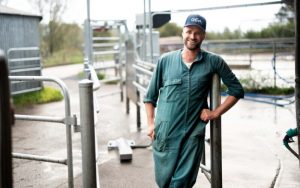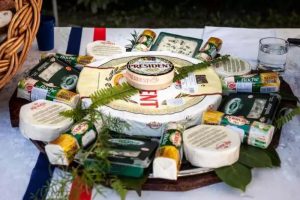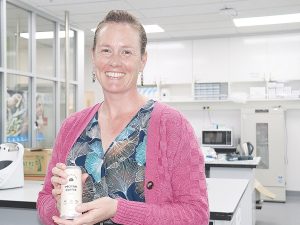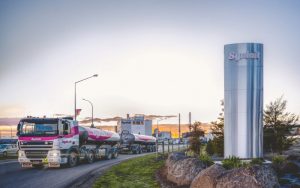
The co-op has invested $40 million to concentrate whey permeate, making it more efficient to transport to its other sites to produce lactose.
Lactose offers a better value return to the co-op than ethanol, which was previously produced at Tīrau, said Fonterra’s central North Island general manager Tony Maclean.
He said some reasons for the conversation were the ongoing costs and onerous Work Safe requirements around the safety and storage of up to 2.5 million litres of ethanol at the site.
The site used to produce and store industrial-grade ethanol for solvents, methylated sprits and alcohol.
Some of that was sent to its Reporoa site for further distillation where the spirt produced was used in RTDs.
“Lactose is a more valued milk derivative and because of ethanol production at the Tīrau site it was deemed to be a low tier dangerous site due to its storage.
“We decided to shut down the ethanol plant to remove the associated risk, avoiding large ongoing investments into it.”
Maclean said the other benefits of converting to lactose production were large cost savings in energy and water use, less waste water and reduced waste to landfill.
“So, it’s a real winner and aligns perfectly with our focus on reducing green houses gases and environmental sustainability.”
He said the majority of staff who wanted to stay on at Tīrau had been “redeployed” into jobs at the new factory where they process up to 2 million litres of milk every day during peak season.
“This is a positive step forward in our long-term strategy, the significant investment in the Tīrau site demonstrates the importance of the site in the North Island.”
The team were now running final commissioning tests, and results had been good, Maclean said.
“After protein and fat is removed from the milk, what is left is the lactose.
“We concentrate it up to 45%, and it’s then sent to Kapuni (in Taranaki) where it’s dried and further concentrated for use in a variety of products, but mainly pharmaceutical grade lactose for tablets and medicines.”
It’s also used in infant formula and beer brewing.

























